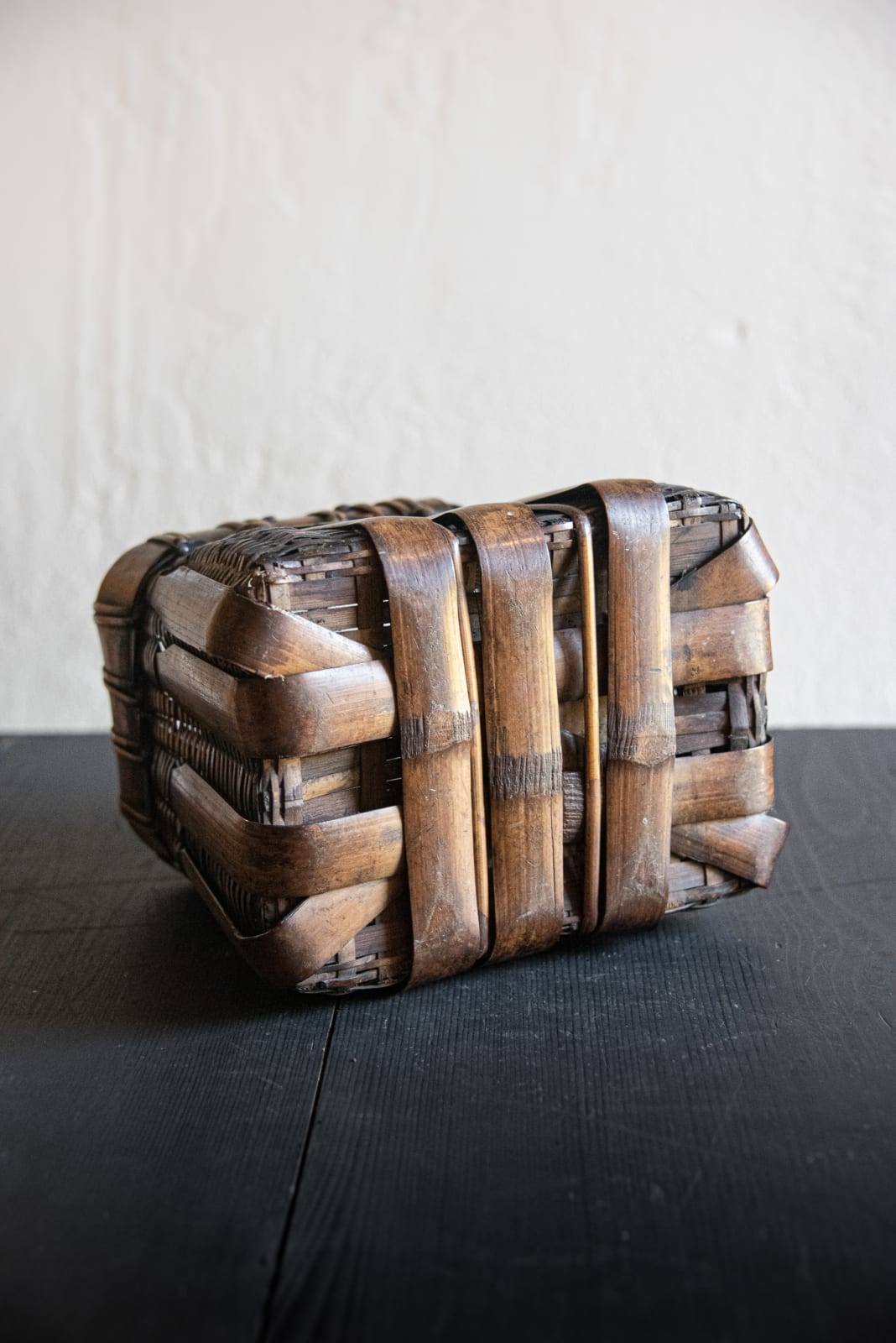


artisan's name unknown
Fish basket or Creel, Late 17th century
Woven bamboo
7'' h x 8'' l x 6'' w
Sold
Further images
Tied to a fisherman's waist or a branch in a brook , this basket would have waited as its owner cast over the water. We can infer, from its modest...
Tied to a fisherman's waist or a branch in a brook , this basket would have waited as its owner cast over the water. We can infer, from its modest size, that it was made to hold the small fish that populate rivers. Its owner must have been humble, catching only a few fish to sell at the local market or bring home to grill over an open fire for dinner.
Yet, characteristic of Japanese culture, this small personal object is also one of astounding craftsmanship. It is from the late 17th century, nearly 400 years old, and bears the marks of its use. It doesn’t ask to be seen as anything other than a simple tool for a fisherman, and in this lack of pretense it finds grace.
Simple, stout, yet fashioned in the most elegant proportions, the basket expresses the distilled kind of wholeness championed in minimalist art. But, it also contains immense warmth. The persistent erosion of the fisherman’s hands and his various catches have imparted their own patina onto this basket. The beauty of the fisherman’s basket is the result of a “collaboration” between its maker, user, and the hand of time
However, we would not be able to appreciate the beauty of this basket without yet another essential collaborator: the connoisseur. One day, the basket left the hands of the fisherman. Its future idled in uncertainty. Many eyes passed over it, and eventually one recognized its beauty. Over many hundreds of years, the basket was cherished, carried by various observant eyes through time. Despite their own changing eras and tastes, each of these collectors recognized a graceful and persistent core.
Now, the basket waits patiently, perhaps curiously, to see how a contemporary eye in this part of the world may recognize it. It is far from where it came, and far from how it was once used. Whichever afterlife it undertakes is the responsibility of the basket’s next steward.
Yet, characteristic of Japanese culture, this small personal object is also one of astounding craftsmanship. It is from the late 17th century, nearly 400 years old, and bears the marks of its use. It doesn’t ask to be seen as anything other than a simple tool for a fisherman, and in this lack of pretense it finds grace.
Simple, stout, yet fashioned in the most elegant proportions, the basket expresses the distilled kind of wholeness championed in minimalist art. But, it also contains immense warmth. The persistent erosion of the fisherman’s hands and his various catches have imparted their own patina onto this basket. The beauty of the fisherman’s basket is the result of a “collaboration” between its maker, user, and the hand of time
However, we would not be able to appreciate the beauty of this basket without yet another essential collaborator: the connoisseur. One day, the basket left the hands of the fisherman. Its future idled in uncertainty. Many eyes passed over it, and eventually one recognized its beauty. Over many hundreds of years, the basket was cherished, carried by various observant eyes through time. Despite their own changing eras and tastes, each of these collectors recognized a graceful and persistent core.
Now, the basket waits patiently, perhaps curiously, to see how a contemporary eye in this part of the world may recognize it. It is far from where it came, and far from how it was once used. Whichever afterlife it undertakes is the responsibility of the basket’s next steward.
Signup for our Newsletter
You will receive two emails a month from us. One introduces artworks and design works from Kyoto's hidden sources and the other is stories from Misako, sharing insights into Japanese culture.
* denotes required fields
为了回应您的查询,我们将根据我们的隐私政策处理您提供的个人数据。


